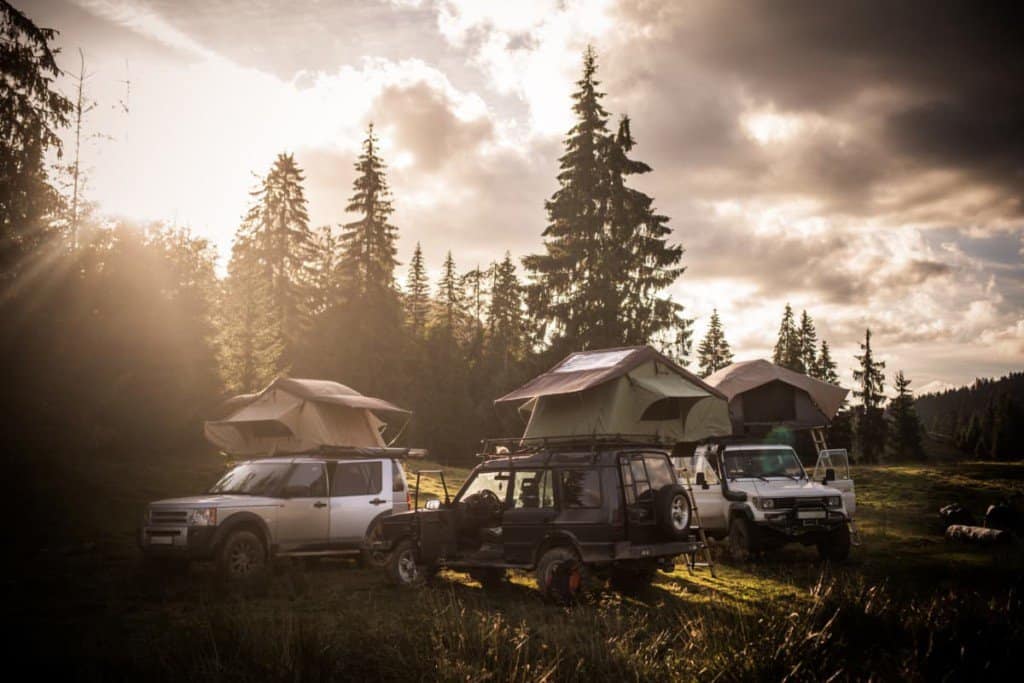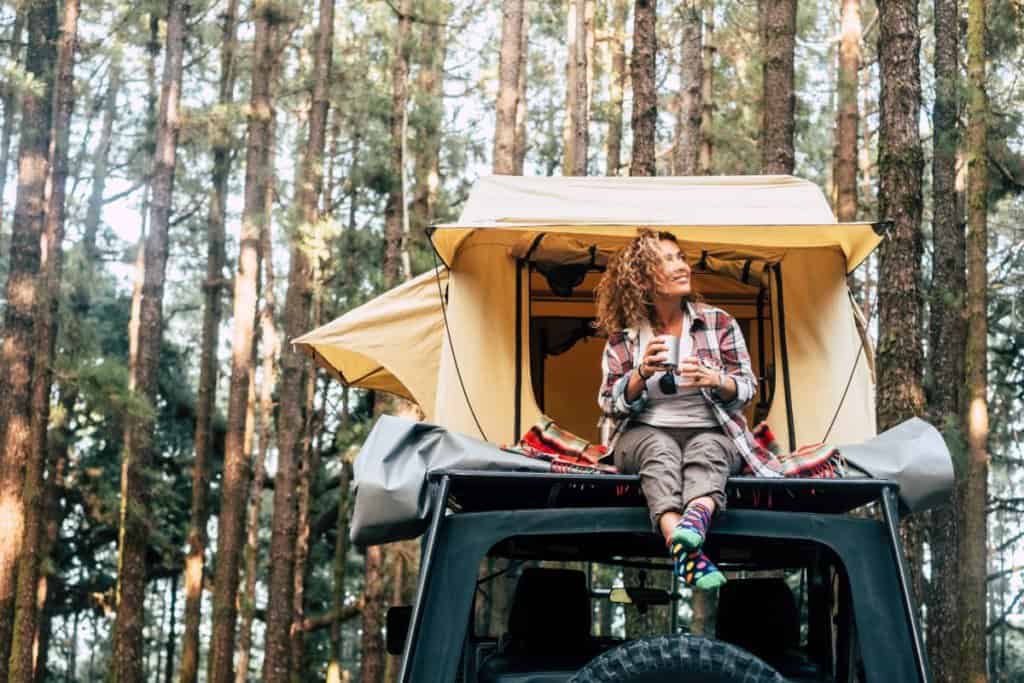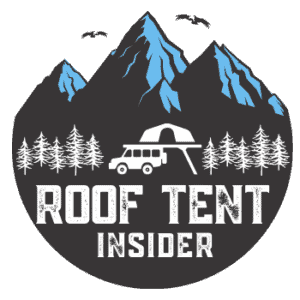Overlanding can be a great way to explore nature in its true essence. Whether you want to go on long overlanding trips or a regular weekend getaway, knowing the basics of overlanding is essential.
If you’re new to overlanding, always prepare your vehicle and gear before any trip. Start with short weekend trips before you go on long trips. By carrying the right gear, preparing your vehicle for the trip, and working on your driving skills, you’ll soon become an overlanding master.
This article will take you through some essential tips that can help you get accustomed to overlanding as a beginner. I’ll also discuss which vehicles are ideal for overlanding, how to improve your off-road driving skills, and a short gear checklist to help you get started. Let’s get to it!

What Is Overlanding?
Overlanding isn’t merely an off-road trip in the wilderness. True overlanding is all about exploring new places, living off your vehicle, and learning new things. Some may call it a trip, but overlanding masters will call it a way of life.
While overlanding is generally safe, it isn’t for the faint of heart. You’re bound to face some challenges in your overlanding journey, but the important thing is to be prepared for these challenges.
When you embark on an overlanding trip, you’ll have to learn more about elements like terrain and weather conditions and have basic survival skills. Most overlanders will live off their vehicle, but you could also pack a tent or pull an off-road trailer if you want more space.
What’s important is that you enjoy the journey, make new friends or simply enjoy nature.
6 Overlanding Tips for Beginners
Now that you have the motivation to start overlanding, the next question is where to start. This depends on your experience with camping, hiking, and off-road trips. If you already know the basics of how to survive a road trip into the wilderness, you can move towards longer trips.

If you’re a beginner and want to get started with overlanding, here are some helpful tips to get you started on your journey:
1. Plan Your Trip
You’ve probably heard the concept of “5 P’s” (Prior Preparation Prevents Poor Performance). If you apply this formula to your overlanding trips, you’ll never go wrong. Always select a route that matches your experience level. If you’re just starting out, you want to go on a short trip with less challenging roads.
Moreover, try to use a route as close to a gas station or population area as possible, especially if you’re a beginner. As you get more experience on how to live off your vehicle and deal with emergencies, you can venture further into the wilderness.
When planning an overlanding trip, take the estimated time into account and make sure you have extra time to reach your destination. If the estimated time to reach a campsite is 5 hours, make sure you plan with a 1-2 hour gap to accommodate for emergencies.
A helpful tip for planning your first few overlanding trips is to ask around. Which trails are beginner-friendly but challenging enough to improve your driving skills? Which trails should beginners avoid? If you know someone who’s experienced in overlanding, you can ask them. If not, join an overlanding forum.
While some of these planning skills come with experience, you should focus on establishing a routine for planning your trips properly.
2. Prepare Your Vehicle
The next big step in any overlanding journey is to prepare your vehicle. If you’re planning on doing overlanding on a budget or want to stick to weekend trips, you don’t have to go for a fully-fitted vehicle initially. Once you get some experience and want to start exploring more difficult trails, you can invest more in your vehicle.
Overlanding can be very expensive, if you’re interested in learning how to save money read my guide for overlanding on a budget.

Here are some things that you should know about preparing a vehicle for overlanding:
Do You Need a 4X4 Vehicle to Overland?
You don’t need a 4X4 vehicle to start overlanding, but it’s a bonus if you get one. 4X4 vehicles help you navigate difficult terrain and are less likely to get stuck than their 2-wheeled counterparts. However, 2-wheel drive vehicles can go on dirt roads with off-road tires.
If you’re planning an overlanding trip without a 4X4 vehicle, make sure you stick to solid dirt tracks and avoid venturing further into the wilderness. Moreover, fit your vehicle with off-road tires and make the suspension higher if you can.
However, avoid tracks with signs for 4×4 vehicles only. Also, avoid mud, deep sand, or ice, and try to plan your trips when the weather is pleasant. The last thing you want is to get stuck in the middle of nowhere when your vehicle doesn’t have enough torque to pull itself out of mud or ice!
How Much Does It Cost to Build an Overlander?
It usually costs thousands of dollars to build an overlander. A regular 4×4 vehicle will start at $10000 and may cost up to $25000 for the latest models. Retrofitting your existing vehicle with advanced off-road capabilities will cost anywhere from a few hundred dollars to a couple of thousand.
However, not everyone needs to invest in fully-fitted overlanding vehicles. As a beginner, you’re better off with a simple 4×4 vehicle. You can build a fully-fitted vehicle if you want to improve the overlander’s capabilities and start venturing into more difficult terrain.
If you’re looking to determine which vehicles are most worth the investment when it comes to overlanding, check out this article.
What Do You Need for an Overlanding Vehicle?
Some add-ons you need for an overlanding vehicle include a roof rack, a roof tent, aggressive-patterned tires, a raised air intake, synthetic rope, and protective bumper barriers.
Here are some add-ons to prepare your 4×4 vehicle for overlanding and their estimated cost:
- Thunderer Trac Grip M/T (Amazon.com): This should cost you a couple hundred dollars per tire, depending on your vehicle’s size. These tires are all-season tires and can be used in any terrain.
- FANTE Raised Air Intake (Amazon.com): This raised air intake for the Land Rover Defender can be a bit pricey, but much cheaper options are available.
- MaxxHaul Roof Rack (Amazon.com): Roof racks are beneficial if you go on longer trips. They also give your vehicle extra storage space and can help carry bicycles. The typical roof rack costs around $100.
- Roofnest Condor Roof Top Tent: While many of these extra fittings are optional, having a roof tent is essential if you want to go on longer overlanding trips. The cheaper options cost around $1700, and the more expensive ones can be close to $3500. Always practice how to use and level a rooftop tent before going on your first trip.
- Champion 12,000-lb. Truck/SUV Synthetic Rope Winch Kit with Speed Mount (Amazon.com): This is another essential part to consider when building an overlander, especially if you plan to go on 4×4 terrain.
Other options, such as jacking up the suspension and adding protective bumper barriers, are optional, and you don’t need them if you’re just starting.
Most Popular Overlanding Vehicles
All 4×4 vehicles can be used for overlanding, but the best ones can easily be retrofitted with additional equipment and modified to suit overlanding trails. When looking for an overlanding vehicle, you should consider ground clearance, reliability, space, and off-road ability.
Some of the best overlanding vehicles include:
The Land Rover Defender
If you want to venture into all types of off-road trails without worrying whether your vehicle will make it or not, the Land Rover Defender is the car to get. Long considered the best off-road vehicle, it’s ideal for driving in challenging terrain while still maintaining a relative level of comfort.
The Jeep Wrangler
When it comes to reliability on off-road trails, the Jeep Wrangler is on top of the list. Not only does it have great off-road capabilities, but it’s also easy to modify, and even the older models are perfect for overlanding. Therefore, if you’re looking for a durable, reliable option, this is it.
Toyota Tacoma
The Toyota Tacoma has long been an overlanding favorite because of its off-road capabilities and space. It can carry extra gear for longer trips and has great maneuverability on tight trails. You’ll also get after-sales support for both new and second-hand models.
Jeep Gladiator Overland
If there was ever a vehicle designed for overlanding, this is it. With a V6 285 horsepower engine and a 6000-pound towing rating, it’s ideal for any terrain. It also comes with a comfortable interior and can be upgraded with every overlanding accessory available.
3. Create a Checklist for Essential Gear
Once you have your vehicle ready for the trip, you’ll need to make a list of essential gear. Never pack for a single day’s trip, even if you plan to be back by evening since you never know when you need additional supplies. While experienced overlanding enthusiasts may have memorized overlanding essentials, you’ll need a checklist when starting out.
Here are some items to include in essential gear:
- A swiss army pocket knife.
- Enough water for drinking and cleaning.
- A first aid kit for emergencies.
- A map (you may have GPS, but you’ll need a physical map as a backup option).
- Two spare tires, a jack, and tools to make minor repairs to your vehicle.
You’ll also have to pack food, snacks, a cooler, and anything else you would on a regular camping trip. The further you go away from civilization, the more important it is to pack additional essential gear in case of emergencies.
Furthermore, never keep enough food, water, and gas for the duration of your trip. Always keep extra so you can survive in case of a mishap.
4. Learn What To Do in Emergencies
Even if you prepare thoroughly, you’ll likely encounter some form of challenge on your overlanding trip. This can be anything from getting stuck in deep mud to having a vehicle breakdown. Here’s what to do when you face an emergency situation during an overlanding trip:
- Assess the situation before you make any move. Always remain calm so you don’t miss anything noteworthy. If you’ve packed enough supplies for an emergency, there’s no need to panic.
- Check whether you can use existing gear to get out of the mess. If your car is stuck in deep mud, look for the nearest tree or boulder to attach a rescue winch. If your tire is punctured, simply change the tire.
- If you’re experiencing a major issue (your car breaks down), try to contact emergency services. If you’re in an area with no mobile signal, use a flare gun to alert others to your position.
- Never leave your vehicle, especially in the wilderness, since you have a better chance of being found on a trail than far away from it.
Always share your trip details with someone before you leave as a precaution, so they can contact emergency services if you don’t return on time.
5. Work on Improving Your Driving Skills
While it’s great to have all the bells and whistles on your overlanding vehicle, it’s no substitute for good driving. As many people who do overlanding regularly will testify, driving off-road requires special skill.
The only way to improve your off-road driving skills is to practice your driving proactively. Look at how the vehicle moves in different terrain and practice on dirt roads before going to 4×4 tracks.
Once you get some experience driving off-road, you’ll easily be able to get out of situations where others may need to call a tow truck.
6. Get an Overlanding Buddy
While it’s nice to enjoy the outdoors alone sometimes, you’re much better off starting overlanding with a travel buddy. If you know someone who already goes on such trips, you can accompany them while you’re learning. While you can learn the basics of overlanding from a guidebook or videos, it’s no substitute for a mentor.
If you can’t find a mentor, you can take any friend along to provide companionship on longer trips. In the worst-case scenario, at least one will make it back alive!
Final Thoughts
If you enjoy camping and want to take exploring nature to the next level, you should try out overlanding. If you’re new to the practice, always plan every trip thoroughly, get the best vehicle you can and complete your essentials checklist before every trip.
Additionally, remember that you may get stuck sometimes, but there’s no need to panic if you have the right equipment to get back on track. Who knows, you may learn a lot about life from your overlanding trips!
